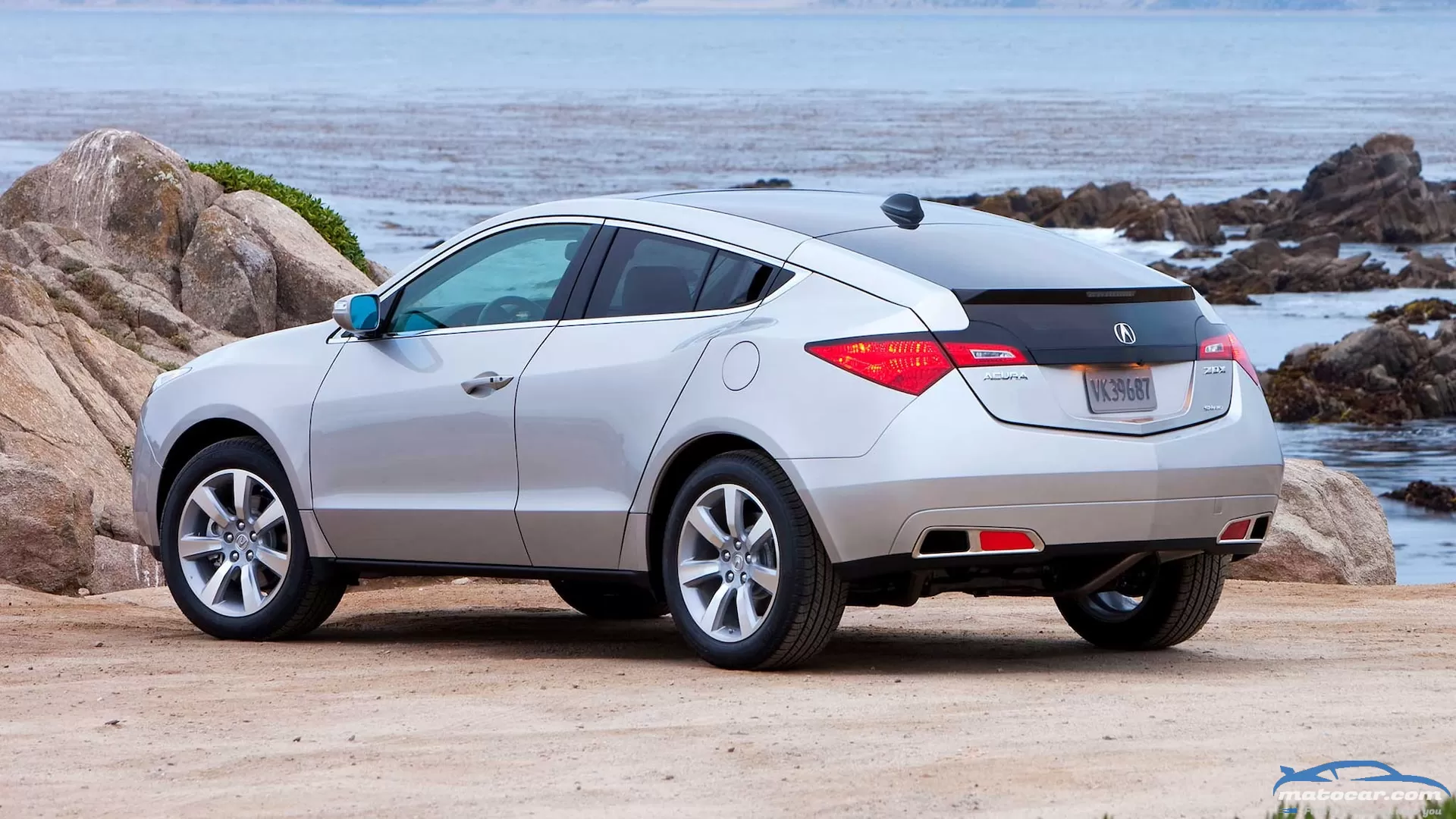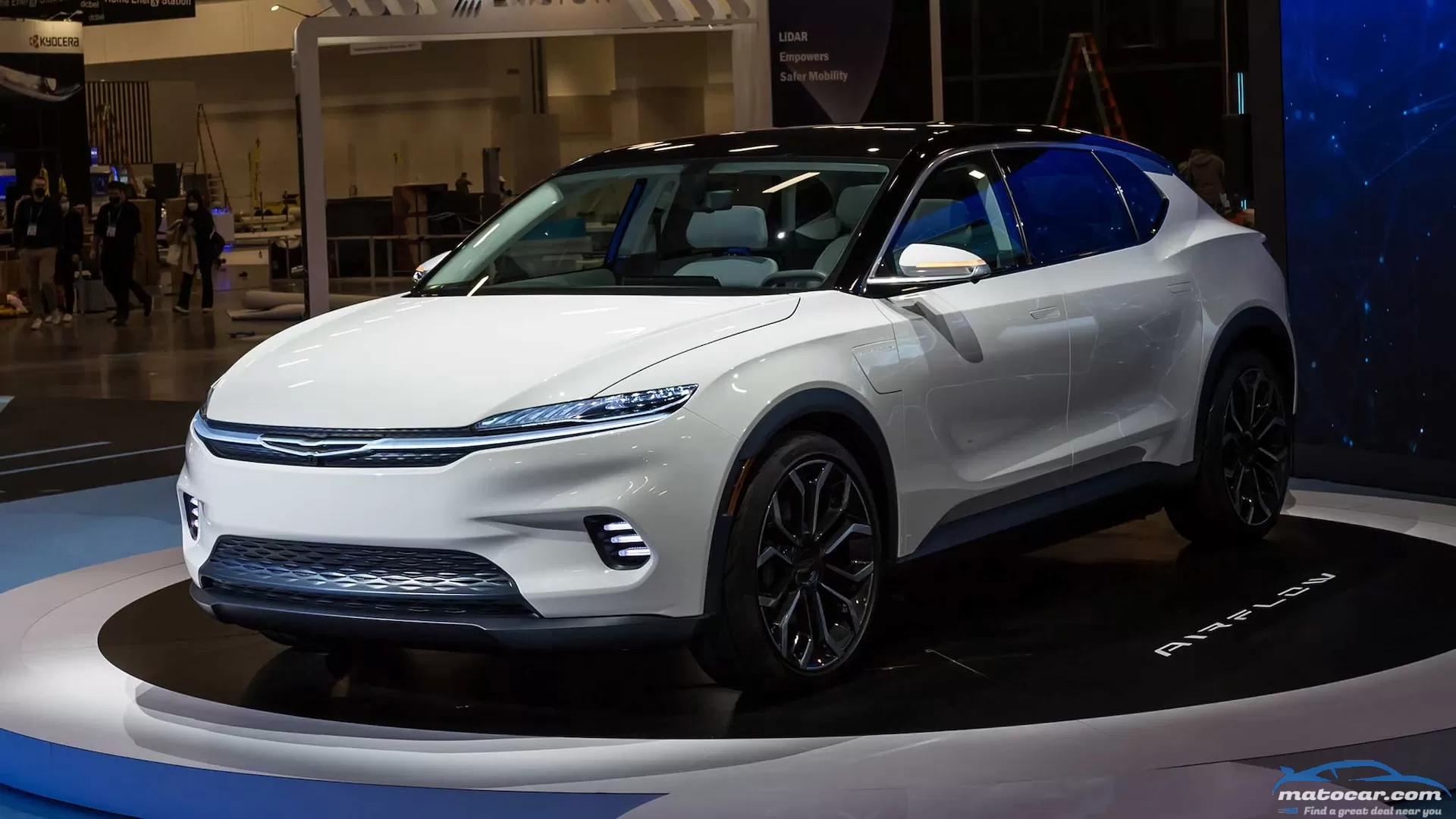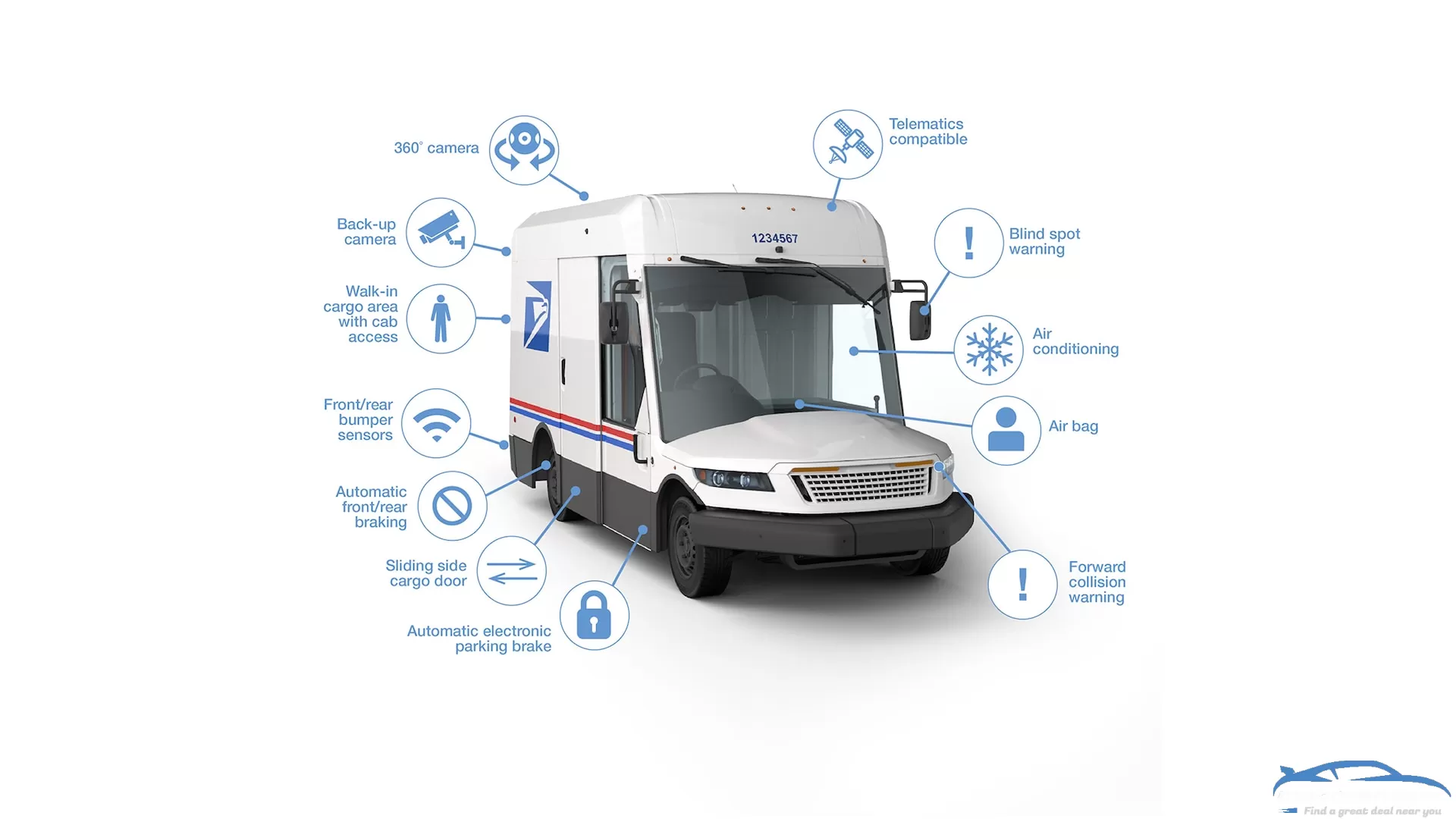Acura Resurrects ZDX as Electric SUV With Sportier Type S Version

Acura has many great names in its arsenal, both used and unused. It recently brought back the iconic Integra nameplate, for example, and its history kicked off with the, um, legendary Legend. For the name of its upcoming electric SUV, its first-ever all-electric product, Acura is mining its past—but is digging up a weird fossil indeed: ZDX.
What Is an Acura ZDX?
The ZDX name is somewhat cool-sounding—at least amongst Acura's "_DX" SUV monikers, including the RDX and MDX—that was previously applied to a single-generation flop, a fastback-styled SUV introduced for 2010 that sold so poorly it lasted only through the 2013 model year.
Now, depending on your point of view, the ZDX was either severely misunderstood and unfairly maligned for its beaky schnoz (Acura's grille de jour in the naughts), or it deserved to be killed with fire. Proving that not much in life is fair, the original ZDX largely mimicked the coupe-SUV format laid down by the BMW X6 that had arrived two years prior.
Like that Bimmer, the Acura was based on a conventional SUV (an X5 in that case, and the Acura MDX family hauler here) but sported a lower, more hunched profile for some extra visual pizazz and less cargo space. It also came with Acura's torque-vectoring Super Handling All-Wheel Drive (SH-AWD), though only a middling V-6 engine. BMW's X6, which could be had with powerful V-8 engines, survived and thrived, even spawning a smaller X4 variant and similar competitors from Mercedes-Benz, Audi, and Infiniti. The ZDX did not.
The ZDX Is Back
Acura's ZDX is now being given a second lease on life, with the name officially destined for the brand's new electric SUV. In announcing the name, Acura referred to the upcoming EV SUV as a "performance" model, and added that it will incorporate styling from from the Precision EV concept. While the Precision EV concept connection doesn't specifically rule out a fastback roofline, we should point out that that show car has a fairly normal overall shape; it similarly eschews any funky detailing like the old ZDX's pointy grille, though it is festooned with LED lights.
Even greater performance will be available via a promised Type S variant, which in Acura-speak is the name applied to the highest-performance version of a given model. There are TLX and MDX Type S versions available today, and the sold-out, now-discontinued NSX supercar capped its run with a Type S variant.
We also know the ZDX will be a 2024 model, set to debut either sometime next year or early in '24 in full production guise. It will borrow GM's Ultium motor and battery technology at first—just like the mechanically related Honda Prologue due around the same time—with subsequent electric Acura's utilizing a new global e:Architecture that also will see collaboration with General Motors.
Ironically, the original ZDX was fairly wild-looking, though one of its biggest letdowns was its lackluster powertrain. If Acura were to translate the old ZDX's visual drama into this decade while delivering satisfying electric punch and appropriate dynamic zest, we think the ZDX name could stick this time around.
You may also like
ProsSupercharged power wallopFantastic chassis controlExcellent six-speed manual transmission ConsComplicated performance modesFeels big at timesVery thirstyThere's a scene in the movie Mad Max where Max gazes upon a blown V-8, whining and roaring in the engine bay of a Pursuit Special as the mechanic maniacally exclaims: "It's the last of the V-8s!" We couldn't help but replay that clip in our minds as we hammered the 2022 Cadillac CT5-V Blackwing around the Hyundai Proving Ground and later as a finalist on Angeles Crest Highway and the Streets of Willow circuit. We're not in some distant dystopian future, yet here is the last of Cadillac's supercharged V-8 superheroes, a stupendous, 668-hp sendoff to the marque's high-performance V-series cars."What a shame Cadillac is going to stop making monstrous supercharged track machines like this," senior features editor Jonny Lieberman said. "Because it just feels so good to drive. So, let's call the big Blackwing bittersweet. As well as awesome!"The rest of the judges were as effusive in their praise, lathering love on the CT5-V Blackwing for its composed chassis—thanks in part to GM's excellent magnetic ride control—and its exceptional, stout brakes. (Our test car had the $9,000 carbon-ceramics.) And we can't forget the six-speed manual transmission and its no-lift shift feature; the gearbox garnered plenty of judge fan mail (and more all-caps exclamations) and is a novelty on a performance sedan these days."Great manual transmission," features editor Christian Seabaugh said. "It's one of the best ones here. Short, precise throws with just enough assist to ensure you never miss your gate, but not enough to make the shifter feel springy. Good clutch feel, well-spaced pedals."Although it's on the heavy side at 4,067 pounds, the CT5-V Blackwing still lays down some impressive performance numbers. It rumbles to 60 mph in 3.6 seconds and on to a quarter-mile time of 11.5 seconds at 127.5 mph, and it reels itself in from 60 mph in 102 feet."Power, power, power, power, and a boatload of torque, too," Lieberman said. "I barely needed to shift gears on the Crest, as a tsunami of torque [659 lb-ft] was flooding the joint. You quickly notice this is a large family sedan with a massive rear seat. That said, the suspension does its part, and the body control is surprisingly solid."Indeed, it was hard to find any real flaws with the CT5-V from a performance vehicle perspective. A few judges thought the car felt big at times on Streets, but only in the context that it would have fit better on a larger track where you could take more advantage of its prodigious power. That, and editorial boss man Ed Loh wasn't enamored with what he considered the car's over-configurability. "Like BMW, all the modes are entirely too complicated to navigate. It's dumb to be left wondering if, among the many combinations, you're in the right mode for the conditions," Loh said. Oh, and it also flat-out swills gas.After our evaluation, however, there was zero question the Blackwing's capabilities are immense, the result of two decades' worth of honing and harnessing a front-engine, rear-drive super sedan formula. Max would no doubt approve.And although it's a drag that this Caddy is the last of the supercharged V-8s, the fact the CT5-V is so good it finished third in the inaugural Performance Vehicle of the Year bodes well for Cadillac's high-performance future—electrified though it may be.2022 Cadillac CT5 V Blackwing Specifications Base Price/As tested $84,990/$112,545 Power (SAE net) 668 hp @ 6,500 rpm Torque (SAE net) 659 lb-ft @ 3,600 rpm Accel, 0-60 mph 3.6 sec Quarter-mile 11.5 sec @ 127.5 mph Braking, 60-0 mph 102 ft Lateral Acceleration 1.04 g (avg) MT Figure Eight 23.4 sec @ 0.89 g (avg) EPA City/Hwy/Comb 13/21/15 mpg Vehicle Layout Front-engine, RWD, 5-pass, 4-door sedan Engine, Transmission 6.2L Supercharged direct-injected OHV 16-valve 90-degree V-8, 6-speed manual Curb Weight (F/R DIST) 4,067 lb (54/46%) Wheelbase 116.0 in Length x Width x Height 194.9 x 74.1 x 56.5 in On Sale Now Show All
It appears Chrysler has a shiny new future. Analysts and car buyers, if they've been thinking of Chrysler at all, have been wondering what the future would hold for the brand in the post-merger universe (in which the PSA Group and Fiat Chrysler Automobiles formed Stellantis). Its reduced lineup, like that of sister brand Dodge, led some to imagine vultures circling overhead, despite some assurances from execs that the brand would "rebound" in the future. But the Chrysler Airflow concept shows there's some life in the heritage brand yet.Unveiled at the 2022 CES event, the Chrysler Airflow Concept appears near-production ready, with a feasible crossover SUV shape and fully electric powertrain. However, while Chrysler is using this opportunity to hawk connected features (like OTA updates) and high technology, and the underlying hardware appears likely to hit the road … it won't be for a little while. In the same announcement, Stellantis says its first Chrysler EV won't hit the road until 2025. That vehicle will almost certainly be a production version of this Chrysler Airflow, given its state of development, meaning anyone excited by its appearance will have to wait several years for the opportunity to buy one—while electric crossover rivals like the Nissan Ariya, Hyundai Ioniq 5, Ford Mustang Mach-E, and Toyota bZ4X will have a significant head start.A little late to the party, the Airflow should have the firepower to compete. The concept (and almost certainly the production version) features two 150-kW electric motors, one at each axle. With EVs, 1+1 does not always equal 2 when it comes to total system output, so don't expect a full 400 horsepower from the dual motor setup. But 375? Sure, that seems reasonable, and puts it right between a regular dual-motor Mach-E and its GT performance version.The battery size isn't detailed but Chrysler promises 350-400 miles on a single charge, which would put it on the highest echelon of contemporary EV range figures—although who knows where things will be in three years, when the Airflow is likely to arrive. Only the Lucid Air and Tesla's Model S currently meet or exceed those figures, the former pairing serious aerodynamic engineering with a massive 118-kWh battery. Given the name, Chrysler would be smart to lean heavily into the aerodynamic angle.Speaking of the name, it's an interesting one to revive. The original Chrysler Airflow was an ambitious, streamlined, futuristic … total market flop. Its curved, streamlined front end heralded the future, but the goofy waterfall grille and overall vibe just didn't gel with 1930s car buyers. It's doubtful anyone who isn't in automotive media or history will care, but it's an interesting naming choice.Inside the Airflow, Chrysler crows about the passenger experience, including the STLA SmartCockpit we told you about earlier. Stellantis isn't wrong about a change in emphasis from the raw hardware to the total ownership experience, especially as driver assistance systems become more capable and the relationship between vehicle and driver changes. Speaking of which, Chrysler will include its STLA AutoDrive Level 3 driver assistance system, which should gain capabilities in the future via OTA updates.Back to the future, let's talk about 2028: that's the date by which Chrysler promises a fully electric slate of vehicles. Remember, Chrysler sells just two vehicles to the general public today: the Pacifica and the 300—the Voyager variant of the Pacifica is now fleet-only, and, well, it's basically only a low-spec Pacifica anyway, not a standalone vehicle. The 300 is almost certainly a dead car walking, given that its Dodge platform-mates have been given termination notices; 2024 is the year that the Challenger and Charger will die in, with replacements confirmed … but as what, is unclear. And the impressive Pacifica Hybrid adequately future-proofs the minivan line, for a while.A new EV muscle car for the Dodge brand will be revealed in 2022, and it's not outside the realm of possibility that it'll be heavily related to the Chrysler Airflow. One EV that's comfortable and sleek, another one gruff and outrageous … seems like a healthy two birds, one platform strategy to us. It's been working for Chrysler and Dodge for decades, so it's sound.Whatever Airflow spawns or inspires, Chrysler says it will lead Stellantis itself into a new era that puts electrification at the fore. The Airflow is undoubtedly important for Stellantis in America, where it is now lagging on EVs, but the way it evolves what the Chrysler brand stands for—and the influence it has on the brand's future product—will be incredibly important. The entire industry is at a crossroads, and Airflow is Chrysler's way forward.
February Update: The U.S. Postal Service Rejects EPA PleaA statement released by the U.S. Postal Service announced the organization would move ahead as planned with its procurement deal with Oshkosh Defense's In the Postal Service's announcement, Postmaster DeJoy did offer that the current procurement plan does already include 5,000 battery-electric vehicles, and that aspect of the program could be expanded with additional funding provided through internal means or congressional budgeting. However, DeJoy says "the process needs to keep moving forward" with the current plan—which has satisfied all of its strictly legal requirements that do not include the EPA's audited requests. DeJoy previously claimed additional BEV procurement would require up to $4 billion in additional funding.The nature of the deal with Oshkosh Defense also allows the Postal Service to shift its procurement powertrains as orders are delivered, not placed, so if funding for the more expensive BEV next-gen delivery vehicle is approved by the U.S. Congress in the future, then the Postal Service can update the order to fulfill more BEVs. From the statement: "The NGDV contract is an indefinite delivery, indefinite quantity (IDIQ) contract, meaning the Postal Service will have the ongoing ability to order more NGDVs over a fixed period of time, in this case 10 years."Mark Guilfoil, Vice President for Supply Management at the U.S. Postal Service said, "We thank the federal agencies, including the EPA, for their input. [...] After thorough review and study we determined that EPA's request for a supplemental EIS and public hearing would not add value to the Postal Service's already year-long review. It is also important to note that a supplemental EIS and public hearing are not legally required."It's important to highlight the true value of these new vehicles for the Postal Service, despite their many efficiency shortcomings, which is how much more comfortable they're meant to be for workers. From the Postal Service: "The search for replacement vehicles for the Postal Service's delivery fleet, which started in 2015, resulted in the purpose-built NGDVs that will deliver air conditioning and heating, improved ergonomics, and some of the most advanced vehicle and safety technology — including 360-degree cameras, advanced braking and traction control, air bags, a front-and rear-collision avoidance system that includes visual, audio warning, and automatic braking." This story was originally published February 3, 2022, and has since been updated to reflect developments in the USPS' purchasing of new trucks. The rest of the original article continues below. How Bad Is the New Mail Truck?Why Is the EPA Arguing Against the New Trucks?A Measured Warning




0 Comments